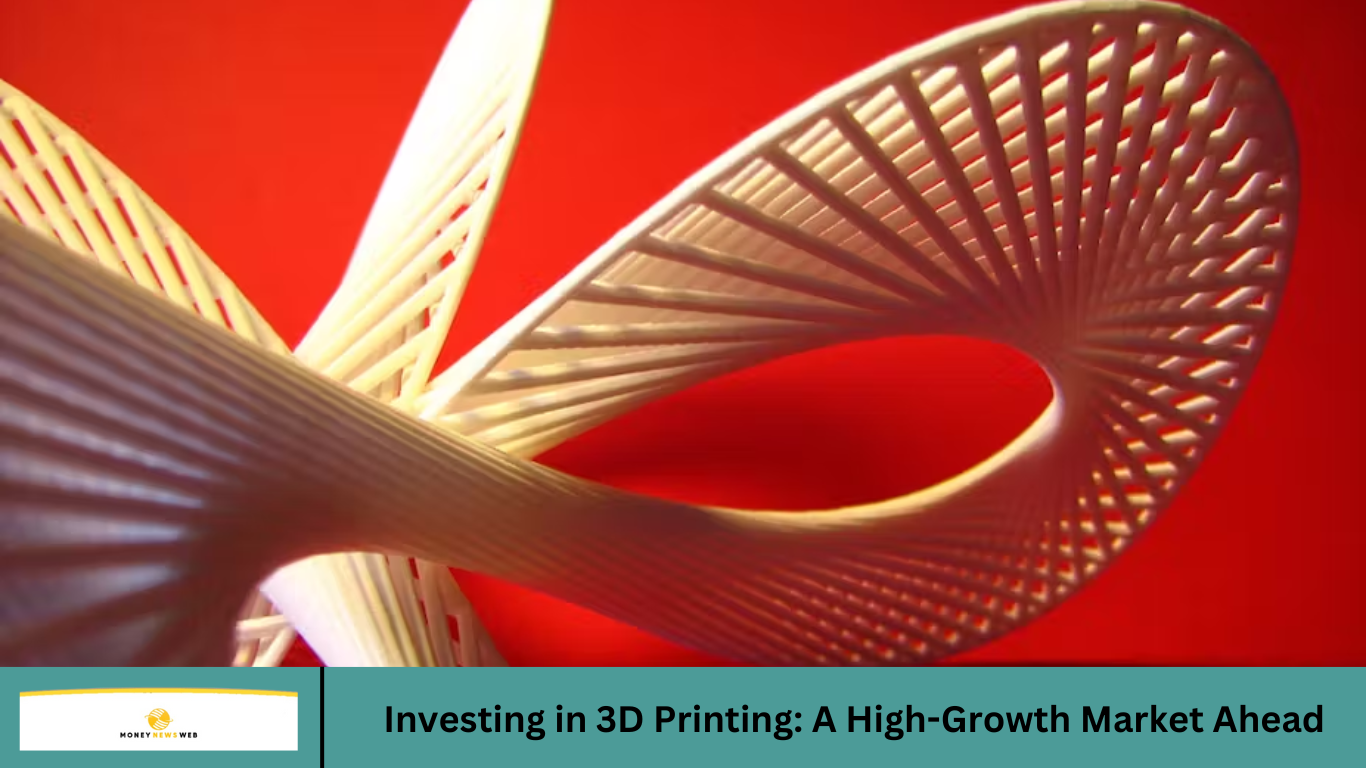The 3D printing industry, also known as additive manufacturing, has evolved from a niche prototyping technology into a revolutionary force across multiple sectors—including aerospace, healthcare, automotive, and consumer goods. As the technology advances, investors are increasingly eyeing 3D printing stocks as a high-growth opportunity.
With projections estimating the global 3D printing market to exceed $100 billion by 2030, driven by innovations in materials, speed, and industrial adoption, now may be an opportune time to consider investing in this disruptive sector.
Why 3D Printing is a High-Growth Market
Expanding Industrial Applications
Initially used for rapid prototyping, 3D printing now plays a crucial role in:
- Aerospace & Defense – Lightweight, complex parts for aircraft and spacecraft (e.g., SpaceX, Boeing).
- Healthcare – Custom prosthetics, dental implants, and even bioprinting human tissues.
- Automotive – Faster production of car parts, including electric vehicle (EV) components.
- Construction – 3D-printed homes and infrastructure to address housing shortages.
Cost Efficiency & Sustainability
- Reduced Waste – Unlike traditional subtractive manufacturing, 3D printing adds material layer by layer, minimizing waste.
- On-Demand Production – Companies can manufacture parts as needed, reducing inventory costs.
Technological Advancements
- Faster Printing Speeds – New technologies like HP’s Multi Jet Fusion and Carbon’s DLS are accelerating production.
- New Materials – Beyond plastics, companies now print with metals, ceramics, and even living cells.
Government & Corporate Investments
Governments and major corporations are pouring billions into additive manufacturing:
- The U.S. Department of Defense is investing heavily in 3D printing for military applications.
- Companies like Siemens, GE, and Lockheed Martin are integrating 3D printing into supply chains.
Top 3D Printing Stocks to Watch
3D Systems (NYSE: DDD)
- A pioneer in 3D printing, specializing in healthcare and industrial solutions.
- Strong growth in bioprinting and dental applications.
Stratasys (NASDAQ: SSYS)
- Leader in industrial and prototyping 3D printers.
- Partnerships with Boeing and Airbus for aerospace components.
Proto Labs (NYSE: PRLB)
- Combines 3D printing with CNC machining and injection molding.
- Serves automotive, medical, and tech industries.
Desktop Metal (NYSE: DM)
- Focuses on metal 3D printing for mass production.
- Acquired ExOne, expanding its industrial capabilities.
Materialise (NASDAQ: MTLS)
- Provides 3D printing software and medical solutions.
- Strong recurring revenue from software licenses.
HP Inc. (NYSE: HPQ)
- Though primarily a PC/printer company, HP’s Multi Jet Fusion is a major player in industrial 3D printing.
Nano Dimension (NASDAQ: NNDM)
- Specializes in 3D-printed electronics and circuit boards.
- Aggressive acquisition strategy to expand its tech portfolio.
Risks & Challenges in 3D Printing Investments
While the sector is promising, investors should be aware of:
- High Volatility – Many 3D printing stocks are still in growth phases, leading to price swings.
- Competition – Traditional manufacturers (like Siemens and GE) are entering the space.
- Regulatory Hurdles – Medical and aerospace applications face strict certifications.
- Profitability Concerns – Some companies are still burning cash to scale operations.
Future Trends in 3D Printing
- Mass Customization – Personalized consumer products (shoes, jewelry, medical devices).
- Bioprinting Breakthroughs – Lab-grown organs and tissues for transplants.
- Construction 3D Printing – Affordable housing solutions in developing nations.
- AI & Automation – Machine learning optimizing print designs and reducing errors.
Frequently Asked Question
Is 3D printing a good long-term investment?
Yes, given its expanding industrial applications and technological advancements, 3D printing is poised for sustained growth over the next decade.
Which 3D printing stock is the best to buy?
It depends on your strategy:
- Growth investors may prefer Desktop Metal or Nano Dimension.
- Stable investors might choose 3D Systems or Stratasys.
- Diversified exposure could come from HP or Proto Labs.
Will 3D printing replace traditional manufacturing?
Not entirely, but it will complement it—especially for complex, customized, or low-volume production.
What are the biggest risks in 3D printing stocks?
- High R&D costs
- Slow adoption in some industries
- Competition from industrial giants
How does government policy affect 3D printing investments?
Government funding (e.g., defense, healthcare) can boost growth, while regulatory delays (e.g., FDA approvals) may slow it.
Can 3D printing help with supply chain issues?
Yes, by enabling localized, on-demand production, reducing reliance on global supply chains.
Should I invest in 3D printing ETFs instead of individual stocks?
ETFs like The 3D Printing ETF (PRNT) offer diversified exposure, reducing single-stock risk.
Conclusion
As industries increasingly embrace digital transformation, 3D printing stands out as a disruptive force with immense growth potential. From aerospace and healthcare to consumer goods and construction, its ability to accelerate production, reduce costs, and enable customization positions it as a cornerstone of the next industrial revolution. For investors, this translates into a compelling opportunity to tap into a rapidly evolving market with significant upside. While challenges remain—such as regulatory hurdles and material limitations—the long-term trajectory of 3D printing is clear: it’s not just a trend, but a transformative technology reshaping the future of manufacturing. Strategic investment today could yield substantial returns as adoption continues to expand across sectors.


